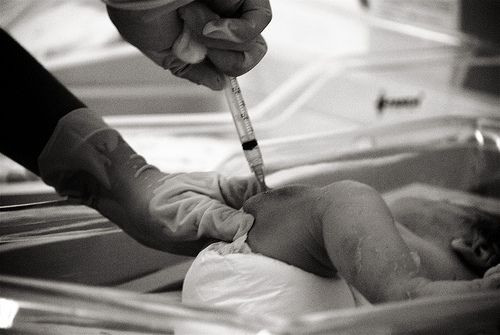Kids’ Race Could Influence ER Pain Treatment: Blacks Less Likely To Receive Care Than Whites

Minority children brought into the hospital complaining of stomach pains and cramps were less likely to receive painkillers than white children, a recent study published in Pediatrics found, although direct racial bias was not suspected as the main contributing factor.
Researchers examined over 2,000 cases of children admitted to the emergency room reporting intense abdominal pain, and analyzed the treatment prescribed to them across a range of over-the-counter medicine, such as Tylenol and ibuprofen, and more powerful opioids, such as oxycodone. Overall, they found that white kids received painkillers 27 percent of the time when they rated their pain above a 7 on a 1-10 pain severity scale, compared to black kids receiving painkillers 16 percent of the time.
"I don't believe the vast majority of physicians knowingly or consciously treat patients differently," Dr. Robert Fortuna, a health services researcher from the University of Rochester Medical Center, told Reuters Health. "The bottom line is that minority children in this study were less likely to receive pain medications, and that's concerning."
The real explanation could rest in doctor urgency and the shortcuts they use that stereotype patients and offer different types of care, remarked the study’s lead author, Dr. Tiffani Johnson, of the Children’s Hospital of Philadelphia. A stressful environment, added to a deficient set of doctor-patient relationships and subjective reports of stomach pain, could also account for the discrepancies.
To test their hypothesis, Johnson and her colleagues collected data on 2,298 patients ages 21 and under who visited the E.R. between 2006 and 2009, complaining of stomach cramps or abdominal pain. This cohort represented roughly 8.1 million cases. While severe pain stood out to researchers as particularly disparate in the prescription of painkillers, the entire spectrum of pain showed similar gaps.
Black children were 39 percent less likely than white children to receive any painkillers and 62 percent less likely to receive a narcotic. Hispanics demonstrated negligible differences between whites in their overall rates of painkiller prescription, the researchers noted, adding that any differences were likely due to chance.
"Moving forward, we need to better understand why these disparities exist and work to correct them," Fortuna told Reuters Health, adding that placing the blame on physicians’ personal racism would be an "oversimplified response."
What other studies have found, such as one 1982 study published in the International Journal of Intercultural Relations, is that subjective reports come with sizable gaps in consistency. Black patients, according to the study, were less likely to admit to being in pain than whites. When they did broach the subject, they mitigated the pain’s intensity. Moreover, a 2007 study from the University of Tennessee College of Medicine found that doctors were nearly twice as likely to underestimate the pain of black patients compared to other ethnicities.
But until the ambiguities are cleared up, Johnson said, the best doctors can do is self-evaluate their treatment protocols to ensure fair practices are being observed and "make efforts to address pain control that may be suboptimal among minority children."
Fortuna, for his part, advocated for greater communication between parents and their child’s health care professional. Knowing the child’s needs may seem like the physician’s responsibility, but given the differences in how much time doctors spend with kids compared to their parents, understanding a child’s body health can make for the doctor’s greatest tool.
"Until we can better understand where the system is breaking down,” Fortuna said, “the best way to fight against this bias is to have open and honest communication.”
Source: Johnson T, Weaver M, Borrero S. Association of Race and Ethnicity With Management of Abdominal Pain in the Emergency Department. Pediatrics. 2013.



























